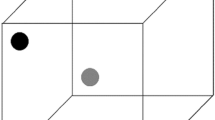Abstract
This paper describes the use of the Stiffness Damage Test (SDT) technique for quantifying the degree of deterioration experienced by thermally loaded concretes. The applicability of the SDT for assessing temperature damaged concrete has been experimentally investigated and analysed. Results have shown the SDT parameters to be sensitive to the influences of test age, the level of temperature exposure and the degree of damage caused by that exposure. A strong and consistent degree of correlation between the results obtained from the SDT and the standard test measurements (compressive strength, static modulus and ultrasonic pulse velocity) has been found. The use of the SDT as a tool for detecting pre-damage and the development of microcracking in concrete specimens subjected to compressive loading have been confirmed by Acoustic Emission (AE) test techniques.
Résumé
Cet article décrit l’utilisation d’une technique, le test de rigidité (Stiffness Damage Test, SDT), permettant de quantifier le degré de détérioration des bétons soumis à des charges thermiques. Le test SDT a été expérimenté et analysé afin d’en évaluer l’application pour les dommages thermiques des bétons. Les résultats ont montré que le test est sensible à l’influence de l’âge du test, du niveau de température et du degré d’endommagement causé par la température. Une forte corrélation a été observée entre les résultats obtenus par le test SDT et ceux, issus de tests standards (force de compression, module statique et vitesse de vibration ultrasonique). L’utilisation de la technique SDT comme outil prédictif pour la détection avant endommagement et le développement de microfissures dans les échantillons de béton soumis à compression ont été confirmés par des tests d’émission acoustique.
Similar content being viewed by others
References
Abrams, M. S., ‘Compressive strength of concrete at temperatures to 1600°F’, in ‘Temperature and Concrete’, (ACI SP-25, 1971) 35–58.
Ahmed, A. E., Al-Shaikh, A. H. and Arafat, T. I., ‘Residual compressive and bond strength of limestone aggregate concrete subjected to elevated, temperatures’Mag. of Conc. Res. 44 (159) (1992) 117–125.
Anderberg, Y. and Thelandersson, S., ‘Stress and deformation characteristics of concrete at high temperatures’, Lund Institute of Technology, Lund, Sweden, Bull., 54 (1976).
Sarshar, R. and Khoury, G. A., ‘Material and environmental factors influencing the compressive strength of unsealed cement paste and concrete at high temperatures’,Mag. of Conc. Res. 45 (162) (1993) 51–62.
Bažant, Z. P. and Prat, P. C., ‘Effect of temperature and humidity on fracture energy of concrete’,Journal of Am. Conc. Inst. 85 (4) (1988) 262–271.
Chakrabarti, K. N., Sharma, K. N. and Mittal, A., ‘Residual strength in concrete after exposure to elevated temperature’,The Indian Concrete Journal 68 (13) (1994) 713–717.
Khoury, G. A., ‘Compressive strength of concrete at high temperature: a reassessment’,Mag. of Conc. Res. 44 (161) (1992) 291–309.
The Concrete Society, ‘Assessment and repair of fire-damaged concrete structures’, The Concrete Society, London, Tech. Report 33, (1990).
Crouch, R. S., ‘Specification for the determination of stiffness damage parameters from the low, cyclic uniaxial compression of plain concrete cores. Revision A’, Mott Hay & Anderson, Special Services Division, Internal Technical Note (1987).
Chrisp, T. M., Wood, J. G. M. and Norris, P., ‘Towards quantification of micro structural damage in AAR deteriorated concrete’, in ‘Fracture of Concrete and Rock—Recent Developments’ Ed. Shah, S. P., Swartz, S. E., Barr, B., Elsevier Applied Science, (1989) 419–427.
Waldron, P., Chrisp, T. M. and Wood, J. G. M., ‘The development of a non destructive test to quantify damage in deteriorated concrete’,Mag. of Conc. Res. 45 (165) (1993) 247–256.
Chrisp, T. M., ‘Quantifying damage in concrete affected by alkalisilica reaction’, MSc Thesis, (University of Bristol, 1993).
Spooner, D. C. and Dougill, J. W., ‘Quantitative assessment of damage sustained in concrete during compressive loading’,Mag. of Conc. Res. 27 (92) (1975) 151–160.
Guo, J. S., ‘Behaviour of concrete subjected to thermal loading’, Ph.D. Thesis, (University of Sheffield, UK, 1997).
British Standards Institution, ‘Methods of testing concrete: Part 116: (1983), Methods for determining the compressive strength of concrete cubes; Part 121: (1983), Methods for determining the static modulus of elasticity in compression; and Part 203: (1986), Ultrasonic pulse velocity, BS1881, London.
Neville, A. M., ‘Properties of Concrete’, 4th Edn. (Longman Group Limited, UK, 1995).
Piasta, J., ‘Deformations of cement phases and microstructure of cement paste’,Materials and Structures, Research and Testing 17 (102) (1984) 415–420.
Author information
Authors and Affiliations
Rights and permissions
About this article
Cite this article
Guo, J.S., Waldron, P. Development of the stiffness damage test (SDT) for characterisation of thermally loaded concrete. Mat. Struct. 33, 483–491 (2000). https://doi.org/10.1007/BF02480525
Received:
Accepted:
Issue Date:
DOI: https://doi.org/10.1007/BF02480525




